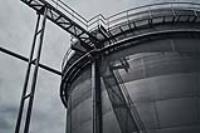 Add My Company
Add My Company
Sign In
Tank Alarm monitoring to keep Kenya fuelled
30-06-2021

How alarm systems are used for managing tank overfill conditions
If not monitored correctly, loss of containment from a tank or storage vessel could pose a serious safety risk to people or the environment. This is why Burhani Engineers, the company installing overfill protection systems in Mombasa’s largest tank storage facility, needed reliable, high level alarm instrumentation to help protect critical assets. Here Ian Loudon, international sales and marketing manager at tank monitoring alarm specialist Omniflex, discusses how having the right alarm system ensures safety in a tank facility.
The UK’s Major Incident Investigation Board report into the Buncefield fire in 2005 concluded that insufficient or faulty critical safety equipment are often the key root cause of tank overfill incidents. This report led to the creation of the international API 2350 standard for tank facilities, requiring audible alarming systems and data collection processes to be implemented for the continuous monitoring of overfill parameters.
So, what defines a good critical alarm system and why do current systems need upgrading?
Problems with current automated systems
For above-ground storage tanks, a key challenge for engineers is being able to respond to instrument failures adequately. Previously, plant operator response time has been cited as the cause for several high profile overfill incidents, including the Buncefield fire. Having the correct mission-critical alarm annunciators is the simplest and most effective solution to ensure quick responses to potentially dangerous overfill events.
In a facility with a single tank, monitoring tank conditions using level gauges, control valves and stop/start pumps may be sufficient without needing sophisticated alarms. However, in a large facility with multiple tanks carrying out regular inspections can be extremely time consuming. What’s more, if a level gauge is faulty and a manual inspection doesn’t pick this up you run the risk of a potentially dangerous overfill event. Even in the best-case scenario, a clean-up operation for a small leakage could be unproductive and costly.
If tank terminals don’t have audible alarms, measurement errors could go undetected and the chance of human error increases. For this reason, Burhani Engineers engaged Omniflex who provided a simple solution for Kenya’s main gas oil and diesel storage facility.
Alarm Technology to manage plant safety
Traditionally, level limit alarm for a tank storage facility would be hardwired back to the control room to control pumping and tank discharge. This is all well and good until there is a system failure or human error preventing the transmission of alarm signals. By placing an independent limit alarm with a HI and a HiHi alarm integrated into a SIL-certified annunciator panel in the field, alarms will sound locally and around a facility until issues have been resolved. Operators are forced by the annunciator to acknowledge and rectify the problem straightaway
With this, site managers are notified of a potential overfill threat before a compromising event occurs and, importantly, near miss events are detected and logged. For this to be effective, independent limit alarm and level measurement transmitters are placed on each terminal storage tank and hardwired to an annunciator. Each transmitter can provide two contact outputs: a high-level alert to act as a warning before levels reach the urgent and potentially dangerous high-high level. Audible and visual alarm statuses are given by the annunciator to attract the attention of operators.
In a facility with upwards of 80 tanks, like Mombasa, you may be wondering how site managers determine which tank alarm annunciator is sounding. There is a simple answer to this because, in many cases, all field alarm statuses are also displayed in the control room, along with GSM-based SMS alerts generated to notify relevant personnel 24/7. This ensures efficient action is taken to prevent overfills, even in an unmanned area of the facility. Most importantly near miss events do not go undetected.
The storage facility in Mombasa is an integral piece of infrastructure because it pumps fuel inland through all of Kenya and other areas of Eastern Africa. Burhani’s expertise and suite of measurement instrumentation coupled with Omniflex alarm systems makes the task of managing tank conditions efficient, simple and safe.
To find out how Omniflex can help you implement a reliable tank monitoring system, get in touch with us on +27 (31) 207 7466. Alternatively, visit our website today.
For more information on Tank Alarm monitoring to keep Kenya fuelled talk to Omniflex UK Limited
Enquire Now
List your company on FindTheNeedle.

